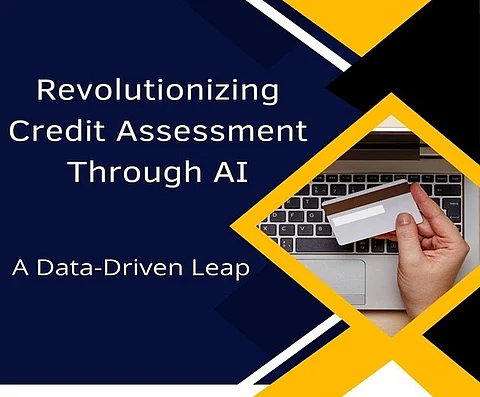

In today's ever-evolving financial landscape, artificial intelligence (AI) and machine learning (ML) are revolutionizing how credit card customers are assessed by using bureau data to enhance accuracy, efficiency, and inclusivity. These technologies enable more sophisticated decision-making through advanced data integration and real-time analysis, outperforming traditional approaches. Gopi Unni Krishnan emphasizes how AI-powered models are reshaping credit evaluation processes, tackling challenges such as data privacy and system integration, and creating a path toward a more equitable and adaptable financial system.
The use of AI and ML in credit assessment has brought significant advancements in risk management. Unlike traditional methods that rely on limited data and manual processes, AI models can analyze large datasets in real time, uncovering subtle patterns and providing more accurate predictions of default risks. This has allowed financial institutions to achieve a remarkable reduction in default rates, with improvements of up to 30% compared to older approaches.
AI-powered credit assessment relies heavily on advanced data integration. These systems merge traditional credit bureau data with alternative sources like rental payments, utility bills, and digital wallet transactions. By expanding the range of information considered, they provide a more comprehensive evaluation of applicants, ensuring that individuals with limited credit histories are not overlooked. This approach creates a credit system that is both more inclusive and more efficient.
AI is revolutionizing the application process by making it faster and more user-friendly. Instead of waiting days for traditional reviews, applicants now receive decisions in seconds thanks to AI-powered evaluations. These systems don’t just save time—they also adapt to new information in real time, enabling ongoing risk assessment and personalized credit decisions. This flexibility has allowed institutions to approve 20% more applications while still maintaining strict risk standards.
AI-powered systems go beyond static credit scores, focusing instead on behavioral data to provide a deeper understanding of an applicant's financial habits. By examining spending patterns, transaction speeds, and merchant preferences, these systems offer a more accurate and detailed assessment. This approach not only improves fraud detection by 42% but also allows for personalized credit offers that better align with individual needs and preferences.
While AI offers tremendous advantages, its adoption comes with notable challenges. Bias in training data can perpetuate existing inequalities, unfairly impacting underrepresented groups, and the lack of transparency in complex algorithms can undermine regulatory compliance and trust. Overcoming these hurdles requires adopting explainable AI techniques to make decision-making processes more transparent and implementing effective strategies to minimize bias. Clear ethical guidelines, regular audits, and transparent practices are essential to ensuring that AI-driven credit decisions are fair, accountable, and meet societal and regulatory standards.
Emerging technologies like blockchain, quantum computing, and edge AI are transforming credit assessment. Blockchain enhances data security and streamlines information sharing, fostering trust. Quantum computing revolutionizes risk calculations with faster, complex processing capabilities. Edge AI processes data locally, enabling real-time decisions while prioritizing privacy and reducing latency. Together, these innovations ensure efficiency, security, and user-centric solutions, redefining how creditworthiness is evaluated in the financial sector.
AI-driven credit assessment combines cutting-edge technology with smart implementation to create a win-win situation. Financial institutions gain higher profitability by improving customer segmentation, offering personalized products, and identifying cross-selling opportunities. Meanwhile, consumers benefit from quicker approvals and customized financial solutions tailored to their specific needs. Advanced predictive models also help anticipate major life events, allowing institutions to proactively adapt and strengthen long-term customer relationships, all while promoting financial inclusivity and efficiency.
In conclusion, Gopi Unni Krishnan highlights how AI and ML are driving a transformative shift in credit assessment within the financial sector. By leveraging advanced analytics and behavioral insights, institutions can achieve unmatched precision and efficiency. However, realizing AI’s full potential requires a steadfast commitment to ethical practices, transparency, and innovation. The future of credit lies in harmonizing technological advancements with a human-centric approach, paving the way for a more inclusive and equitable financial ecosystem.
